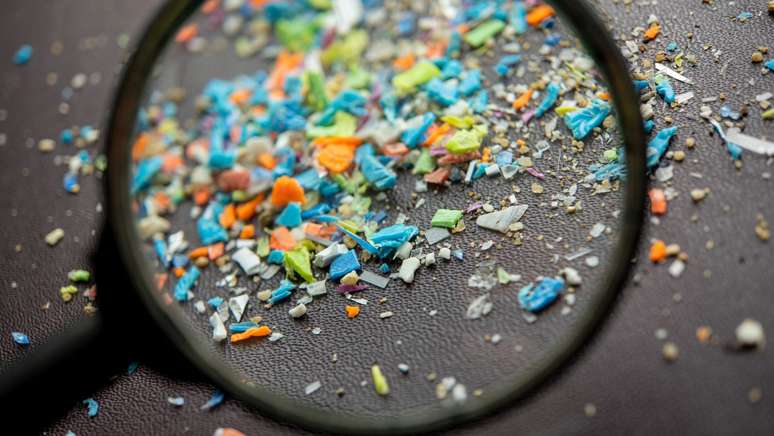Research samples were collected from participants diagnosed with erectile dysfunction
Male infertility continues to be a global problem and its causes are often not well understood. Given the growing evidence of microplastic infiltration into various biological systems such as blood and lungs, researchers are now exploring the potential effects on reproductive systems. Previous research has studied the presence of microplastics in male reproductive organs.
For example, in one study, researchers found 12 different types of microplastics in the testicles of dogs and humans. In dogs, they found that higher levels of certain microplastics were associated with lower sperm counts and reduced testicular weight. Now, new research published in the journal IJIR: Your sexual medicine revealed that four out of five penile tissue samples from five men contained seven different types of microplastics.
These polymer fragments can range in size from less than 5 millimeters up to 1 micrometer. The smallest fragments, known as nanoplastics, are measured in billionths of a meter. Microplastics form when larger plastic materials chemically degrade or physically wear down into smaller pieces. Experts suggest that some tiny particles can penetrate individual cells and tissues within major organs, and there is growing evidence that these particles are becoming more prevalent in our bodies.
Microplastics discovered in human penis tissue
The samples were collected from participants diagnosed with erectile dysfunction (ED) who underwent penile implant surgery at the University of Miami between August and September 2023. Chemical imaging analysis of the samples revealed that 4 out of 5 men they had microplastics in their penile tissue. The study identified seven different types of microplastics, of which polyethylene terephthalate (PET) and polypropylene (PP) are the most common.
Ranjith Ramasamy, lead author of the study and a reproductive urology specialist who led the research at the University of Miami, explained the main findings to Medical News Today. He said that microplastics can enter the human body through ingestion, inhalation and skin contact. And that they are present in the air, water and food, especially in products such as seafood, sea salt and bottled drinks.
He noted that these small particles can travel through the bloodstream and accumulate in various tissues, including penile tissue. These microplastics were detected in 80% of the samples, with the most common types being polyethylene terephthalate (PET) and polypropylene (PP).
It is found in the testicles and other parts of the body
Tracey Woodruff, professor and director of the Center for Environmental Research and Translation for Health (EaRTH) at the University of California, San Francisco, said MNT This was certainly a “mind-blowing” topic, but ultimately it didn’t surprise me that there were microplastics in penile tissue – because they’ve been measured in every part of the body that’s been studied to date, including blood, placenta, feces, and, recently, testes.
So, although this is the first measurement on the penis – which is a first – this was to be expected given that microplastics are found everywhere – everywhere in nature, in animals and in us, the professor pointed out.
For her it was somewhat expected, given that plastic production has increased significantly from 2000 onwards with the introduction of fracking (in the US) and has doubled production since 2008. And we will see more plastic in us if the production of planned plastic will continue, which is expected to triple by 2060. Tracey noted that the study also assessed types of plastic, which is interesting as more recent papers have assessed the types of plastic that make up microplastics. “In this case it is PET and PP, which are also expected as they are some of the most important components of plastic production,” she said. Microplastics can be small enough to travel throughout the body and disperse into different tissues, which is why they have been found in other related parts of the body (e.g., testicles, placenta), she explained.
How to mitigate the potential impact of microplastics on reproductive health
Tracey emphasized that continued research is essential to fully understand the extent of these effects and develop strategies to mitigate exposure and protect reproductive health. However, she added, people can limit exposure by reducing their use of single-use plastic, filtering tap water or choosing fresh foods over frozen ones that come in plastic containers that need to be heated in the microwave.
People can reduce their exposure to toxic chemicals, many of which are found in microplastics, although not entirely because many sources are beyond their control. “Don’t put plastic in the microwave, choose non-plastic containers, including water bottles, when you can, and eat fresh, home-prepared foods.
The University of California, San Francisco has also published evidence-based suggestions for reducing exposure to toxic chemicals, which also work for microplastics. Tracey also highlighted a review of evidence from FIGO — the International Federation of Gynecology and Obstetrics — showing that several interventions effectively reduce exposure to endocrine disruptors like phthalates.
“And since these chemicals are often used in plastics, these practices would also reduce exposure to microplastics: avoid plastic containers, bottles, and packaging; avoid canned foods/drinks; consume fresh, organic foods; and avoid fast/processed foods “, the doctor told NMT.
Tracey said governments need to make systemic changes to ensure we are not exposed to harmful levels of microplastics. This includes focusing on plastics treaties, where one proposal is to limit current production so we don’t get a surge and find even more plastic in people.
Source: Terra
Ben Stock is a lifestyle journalist and author at Gossipify. He writes about topics such as health, wellness, travel, food and home decor. He provides practical advice and inspiration to improve well-being, keeps readers up to date with latest lifestyle news and trends, known for his engaging writing style, in-depth analysis and unique perspectives.








